
What do a tiger, a pig, a dwarf buffalo, and a wild cow have in common? They need our help!
Get ready for the first ever Action Indonesia Day on Sunday, August 18, 2019 at the Safari Park! There will be a tiger keeper talk at 11:45 a.m. and a babirusa (A what? Keep reading...) keeper talk at 1p.m. This day celebrates the collaborative effort between North America, Europe, and Indonesia to conserve four highly endangered species: Sumatran tigers, anoa, babirusa, and banteng.
The day highlights a type of international collaborative effort is called a global species management plan (GSMP). This plan provides a framework that brings together zoos, governmental organizations, and international conservation groups to orchestrate strategies to conserve species and promote their long-term sustainability. Different regions that house each species of concern form an alliance to work together as a cohesive team for the conservation of that species.
The Action Indonesia GSMPs comprise over 50 organizations working together to create breeding and transfer plans for the animals in human care, conduct surveys of wild populations, and implement community outreach programs. Indonesia is home to over 27,000 species, many of which are endemic, meaning that they cannot be found anywhere else in the world, and Sumatran tigers, anoa, babirusa, and banteng function as “umbrella species” by protecting them, other species that share the same habitats benefit.
Perhaps only one of these four species sounds familiar. Most of you have probably visited our seven Sumatran tigers at the Tull Family Tiger Trail at the Safari Park and know Majel, Joanne, Diana, Denver, Rakan, Cathy, and Debbie. Yet, there are fewer than 500 Sumatran tigers remaining in the wild, and that number continues to drop, due to habitat loss and poaching. Poachers kill tigers and illegally sell tiger body parts, mostly for folk remedies.
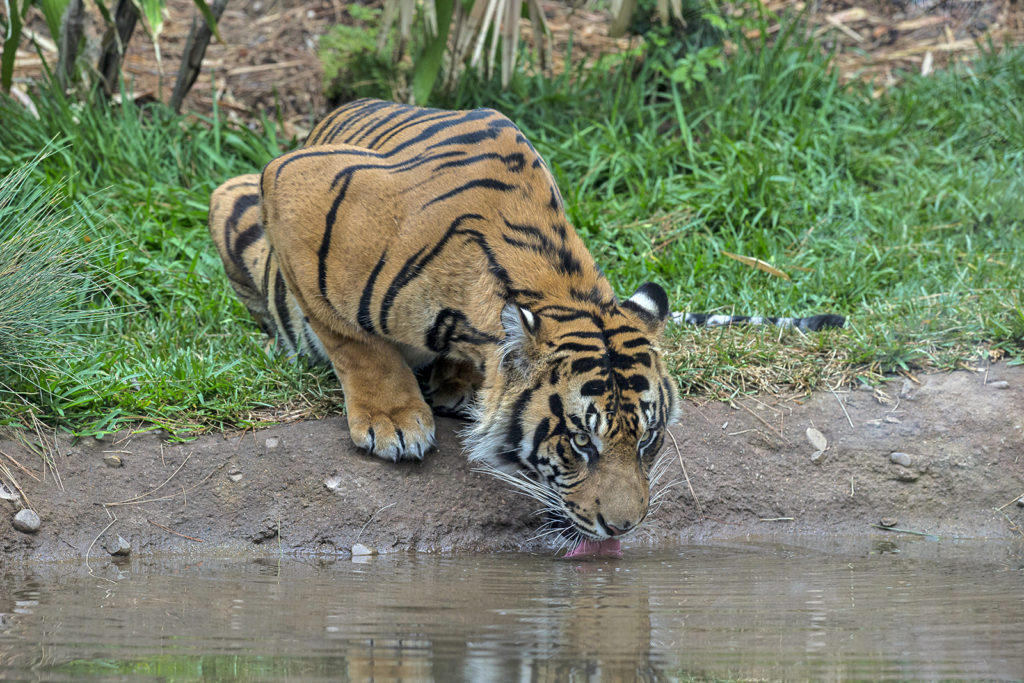
The International Union for the Conservation of Nature (IUCN) classifies Sumatran tigers as Critically Endangered. Scientists estimate that this species could be extinct in its native Sumatra by next year, unless measures are taken to protect and preserve it. Tigers are often touted as flagship species for conservation, because as charismatic megafauna, it is a bit easier to raise funds and awareness for their conservation than it is for babirusa, anoa, and banteng. So what are these other three species in the Action Indonesia GSMPs? Get ready to meet some cool critters!
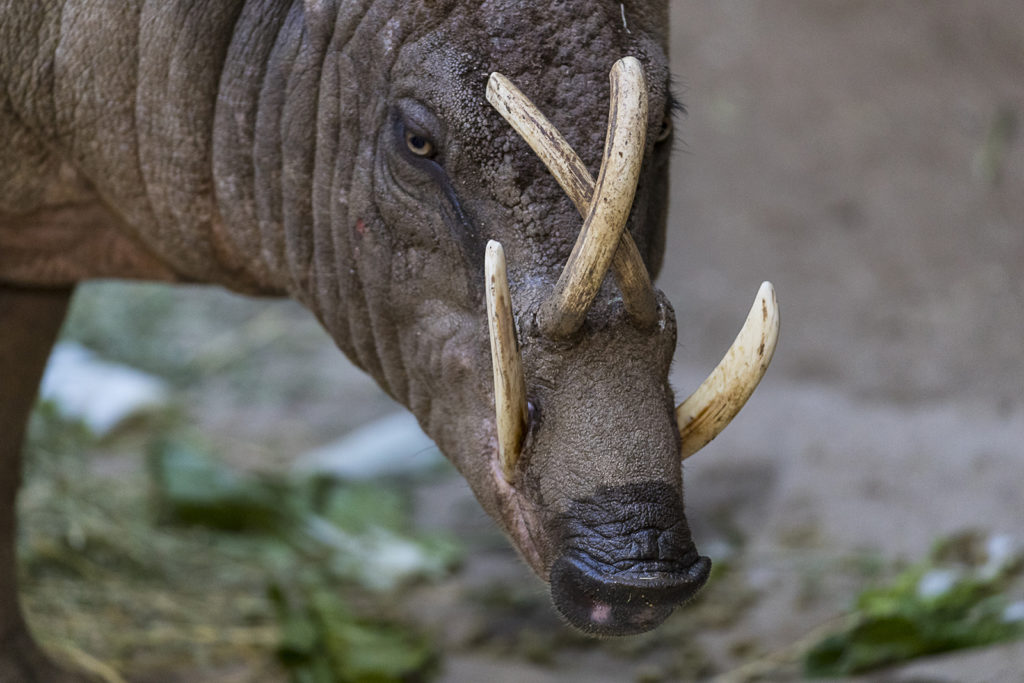
Babirusa are actually pigs! Found exclusively in the forests of Indonesian islands, babirusa are sometimes called pig-deer because adults have four curly tusks, which look a bit like horns or antlers. The tusks may be used in mating displays, combat, and territory defense.
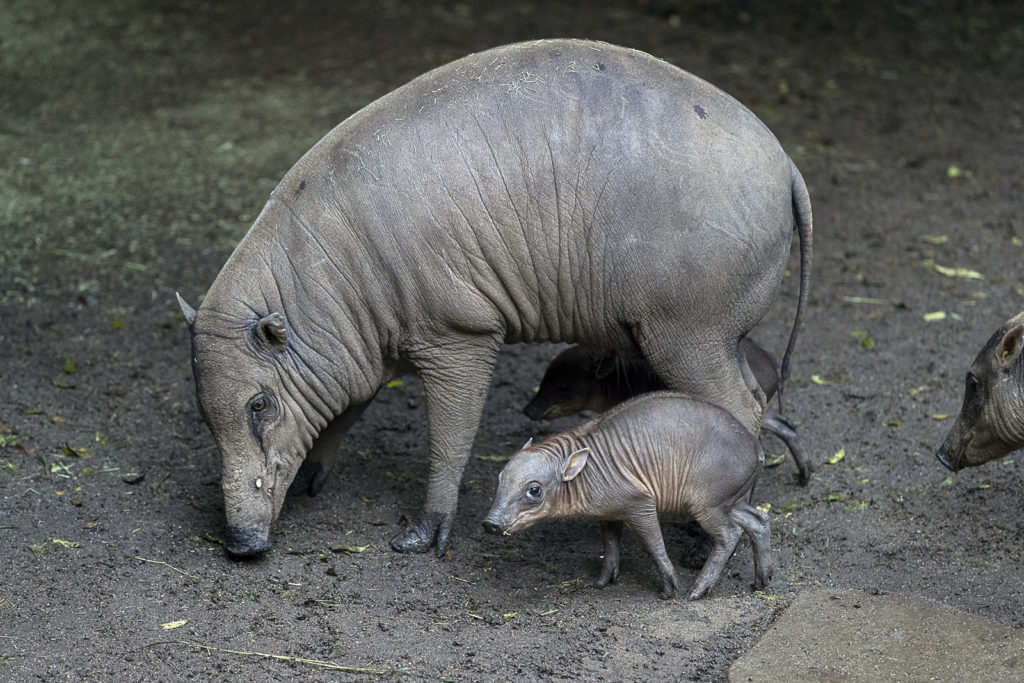
These pigs are classified as a Vulnerable species by the IUCN: habitat loss and illegal poaching have reduced their population to about 10,000 individuals. We currently have four babirusa at the Safari Park. In fact, we just had two babies born on May 25th! You can visit Jethro, Muna, and their kids Asmara and Berani in Nairobi Village and watch them play with their enrichment and enjoy tactile stimulation from their keepers. You may even hear them make their “blut blut blut” greeting vocalizations!
Anoa, also called “dwarf buffalo,” stand only 30 inches tall at the shoulder. Native only to the islands of Buton and Sulawesi in Indonesia, they prefer dense forest habitats, and both males and females use their dagger-like horns to defend their territories.
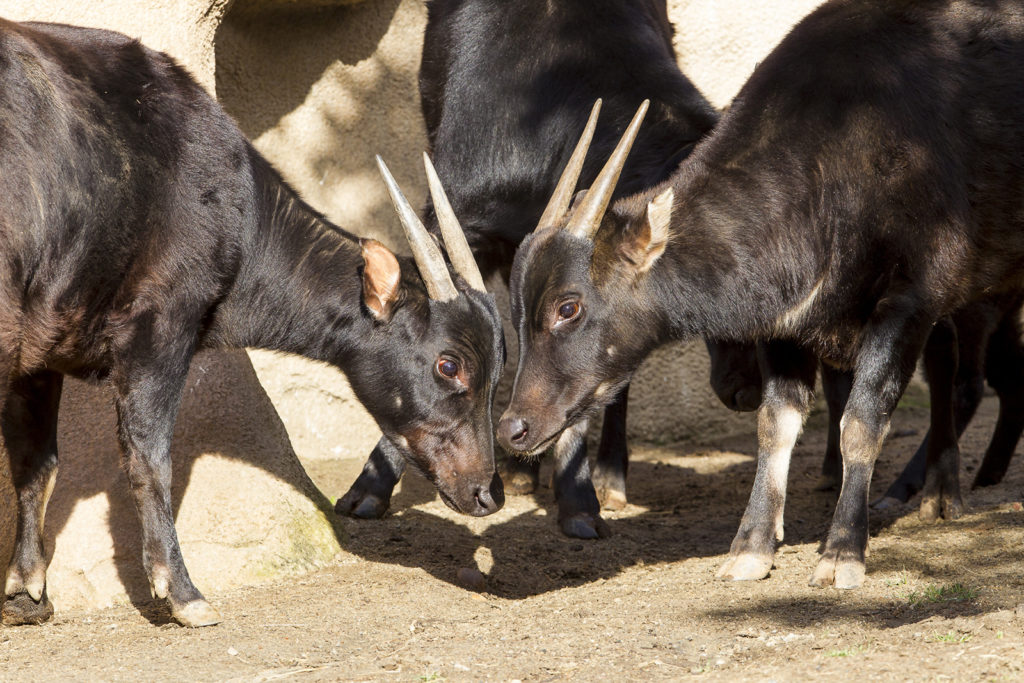
Anoa are classified as Endangered by the IUCN; fewer than 2,500 live in Indonesia. Just like many other species, their main threats are hunting for meat and habitat loss. We don’t currently house anoa, but we hope to in the future!
Last but not least, banteng are wild Indonesian cows. They are often called the “most beautiful cows in the world” because of their big horns, sleek coats, white stockings, and dark eyes.
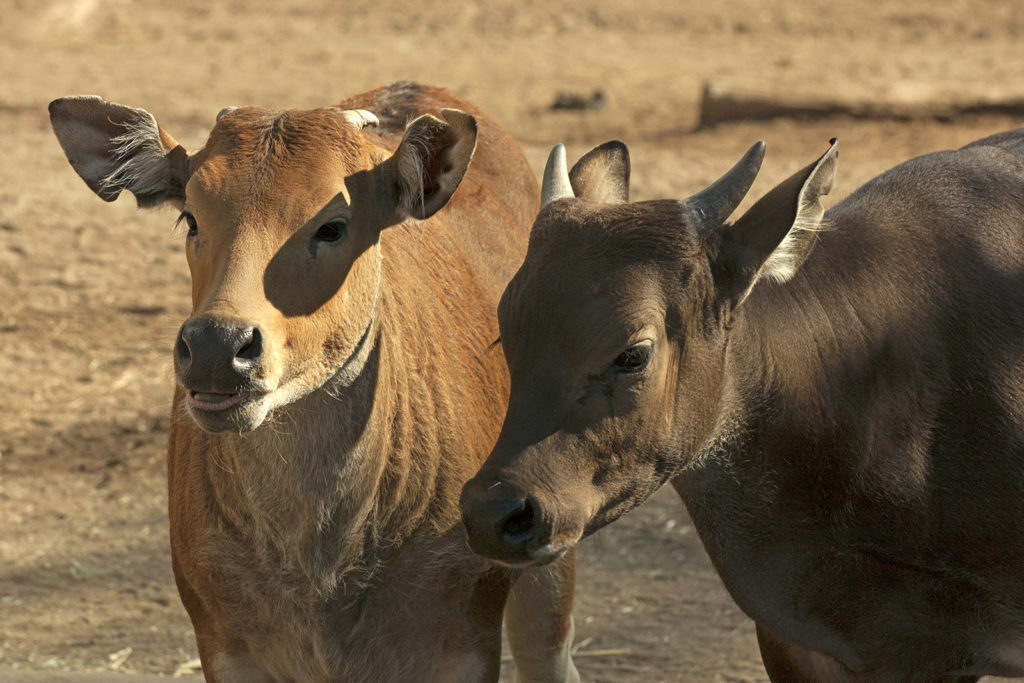
Banteng are so important to Indonesian culture that they were depicted in a 40,000-year old cave painting in Borneo. Unfortunately, they now are classified as Endangered by the IUCN; there are fewer than 8,000 wild banteng left, threatened by hunting and habitat loss. Additionally, banteng can catch diseases from domestic livestock and interbreed with domestic cattle, causing a loss of pure banteng genetics. The Park currently has 17 banteng; five calves, one adult breeding male, two sub-adult males, and a herd of females. One of our Caravan Safaris or an Asian Cart Safari gives you a peek at these majestic cows—and be sure to stop by the Animal Care Center to take a peek at Margarita, a calf born on May 5, who is temporarily at the nursery for extra care.
As you may have noticed, the largest threat to all of these animals is habitat loss. Although farming and mining are big problems in Indonesia, the main cause of deforestation is palm oil plantations. Palm oil is the most widely produced edible oil; over 44 million metric tons are produced in Indonesia and Malaysia per year. Used in cosmetics, shampoo, toothpaste, and processed foods like chips and candy, palm oil production often uses slash and burn agriculture that eliminates natural habitat. However, palm oil can be produced sustainably, and even from thousands of miles away, YOU can help preserve habitat for wild tigers, anoas, babirusas, and banteng! As a consumer, you can choose products labeled RSPO (The Roundtable on Sustainable Palm Oil) or download a free smartphone app to determine which products contain sustainably-grown palm oil.
Come visit the Safari Park on August 18th to discover more as you support the breeding and conservation programs for anoa, banteng, babirusa, and Sumatran tigers. Share your love and help us raise awareness by uploading all of your Action Indonesia Day photos on social media with the hashtag #actionindonesia and visit https://www.actionindonesiagsmp.org/ to find out more. We can’t wait to celebrate with you!
Elise Montanino is a senior keeper at the San Diego Zoo Safari Park. Read her previous blog, Get Ready for Global Tiger Day 2019.




